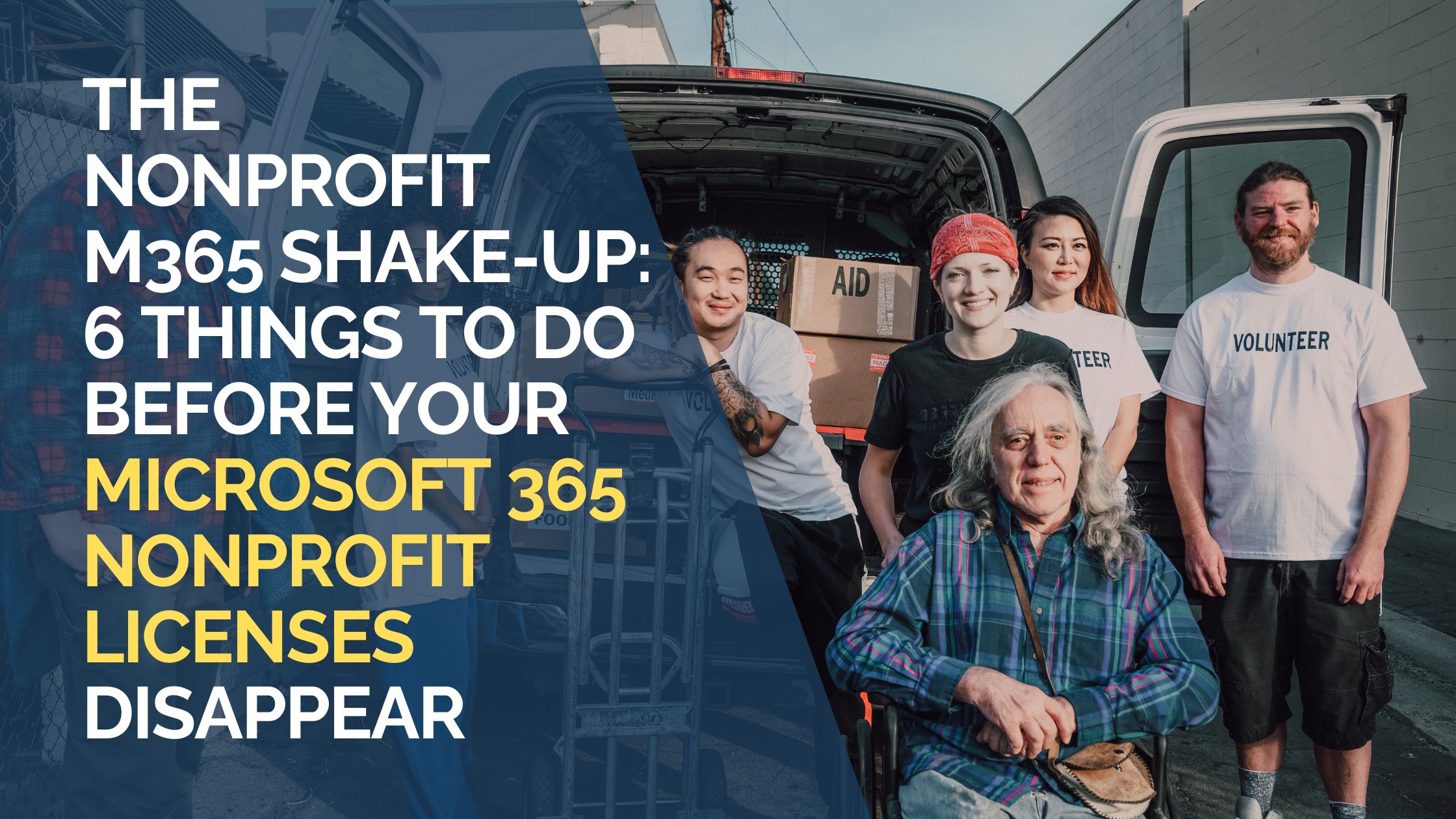Microsoft just dropped big news for nonprofits: the free Microsoft 365 nonprofit licenses many organizations rely on are going away. Starting July 1, 2025, Microsoft will discontinue Business Premium and Office 365 E1 grants for nonprofits. These licenses will no longer renew for free—and that could mean unexpected costs and serious disruption if you’re not prepared.
Here’s a step-by-step checklist to help you figure out what’s changing, what you still need, and what to do next.
✅ 1. Check Your Microsoft 365 Nonprofit Licenses Renewal Date
Your free nonprofit licenses won’t disappear immediately. They’ll expire on your next renewal after July 1, 2025.
- Log into your Microsoft admin center.
- Note the renewal date for each active license (especially Business Premium and E1).
- Add reminders for 90/60/30 days before renewal—Microsoft will send alerts, but you should be ready.
Why it matters: Once that date hits, the free licenses won’t renew, and users could lose access to desktop apps, email, or device protection unless you’re ready.
✅ 2. Audit What You’re Actually Using
Take stock of what tools your team depends on—especially ones tied to the licenses that are going away.
- Do your users rely on Outlook desktop?
- Are you using Intune or Defender for Business for security?
- Who only needs email and online apps like Word or Excel in a browser?
Why it matters: Microsoft is still offering Business Basic for free (up to 300 users), but that doesn’t include desktop apps or endpoint security.
✅ 3. Plan Your Microsoft 365 Nonprofit License Mix
You’ll probably need a combo of free and paid licenses moving forward:
- Use Business Basic (free) for light users: web-only apps, email, OneDrive.
- Use discounted Business Premium (about $5.50/user/month) for users who need security, device management, or desktop Office apps.
Why it matters: Keeping everyone on free licenses might not work anymore. But upgrading only the users who need it keeps your costs low and your team productive.
✅ 4. Budget for New Costs (Before They Surprise You)
This change is a financial curveball.
- Calculate the cost of upgrading critical staff to paid Business Premium.
- Consider whether your donor funding or operational budget needs to adjust.
- Evaluate using Microsoft’s 75% nonprofit discount on paid licenses.
Why it matters: Going from $0 to even a few hundred dollars a month can be a major shift—especially for small teams.
✅ 5. Back Up Critical Data
When a free license expires, you get 90 days before Microsoft deletes data from OneDrive, Exchange, and SharePoint.
- Plan your transitions early.
- Backup all user data as a safety net.
- Don’t wait until 30 days out—especially if you’re juggling volunteers and part-time staff.
Why it matters: If you miss this window, you could lose emails, documents, and shared files forever.
✅ 6. Get Help from a Trusted IT Partner
This change doesn’t just affect your budget—it affects your daily operations, your security, and your ability to serve your mission.
- Work with a partner who understands Microsoft licensing and how nonprofits work.
- Avoid overpaying or under-licensing your team.
- Get support planning the transition now, not in crisis mode.
Why it matters: You don’t want to guess your way through licensing or wake up to staff locked out of their accounts.
🎯 Let’s Make This Simple: Get a Free Microsoft 365 Nonprofit License Evaluation
We’ve helped dozens of organizations like yours figure out exactly what they need—and what they don’t. Let us do the heavy lifting for you.
📅 Book Your Free Nonprofit License Evaluation »
We’ll review your current setup, identify what’s changing, and recommend a right-sized, affordable plan for your team—before your free licenses expire.




